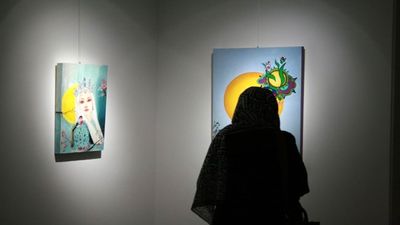Although nearly two months have passed from Norouz (Persian New Year), its footprints are still present in cultural programs.
An international festival titled ‘Footprints of Norouz’ opened on Monday at the ECO Cultural Institute (ECI) in Tehran and welcomes visitors who are interested in Norouz-related artworks. The exhibition will run until May 13.
Head of the ECO Cultural Institute Sarvar Bakhti believes that Norouz is not limited to certain days; rather, it is a tradition which gives energy to all throughout the year.
ECO member states as well as other countries are attending the festival, Bakhti told Iran Daily.
Holding such festivals is in line with the main goals of the ECO Cultural Institute because, in doing so, an atmosphere of amity, brotherhood and trust can be created between nations, and the ten member states have a population of about half a billion people, he said.
“I believe that holding the festival is in line with the institute’s objectives, because it could gather artists from around the world and create a communicative network among them,” he said, harboring hope that such festivals will pave the ground for further communication.
This exhibition is organized to introduce the ancient celebration of Norouz to other countries, said Mozhdeh Mos’hafi-Tavana, who is the director and curator of the festival.
The festival’s secretariat received 507 national and international artworks, 80 of which were selected to be screened at the festival, including the concept of Norouz, greenery, and birth, she added.
“The image of women is depicted on several artworks, and this is not without reason, for Norouz is the season of birth, and women are the symbol of life and childbirth, these images are somehow related to Norouz,” Mos’hafi-Tavana said.
Artists from Russia, Iraqi Kurdistan, Ukraine, Pakistan, Azerbaijan, India, Tajikistan, Afghanistan, Italy, Spain, Mexico, Turkey, Hungary, Tunisia, the Netherlands and Romania are participating in the festival.
Artworks on display are categorized into sections of painting, needlework, sculpting, inlaid wood, wood carving, calligraphy, and kelim, she noted.
Source: Iran Daily

